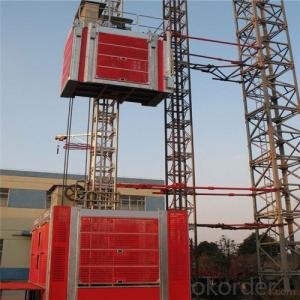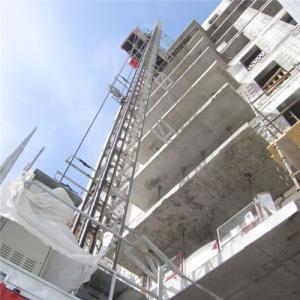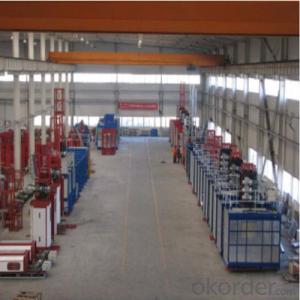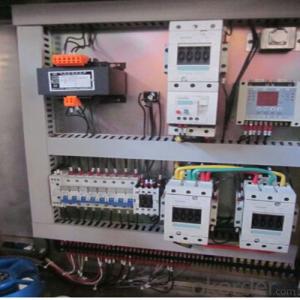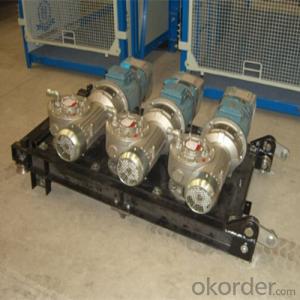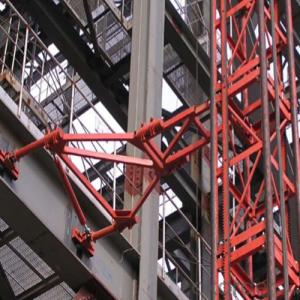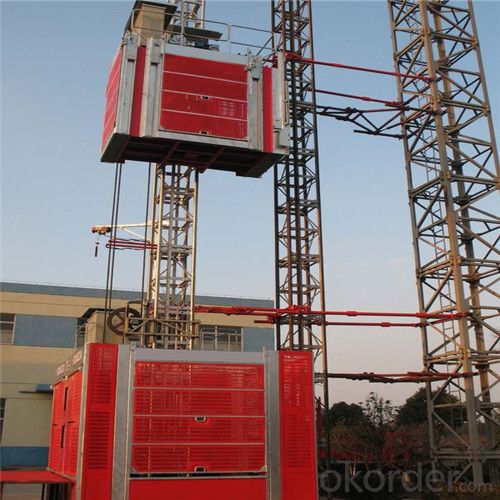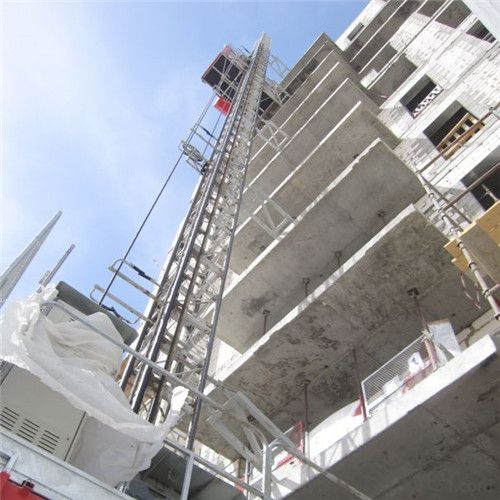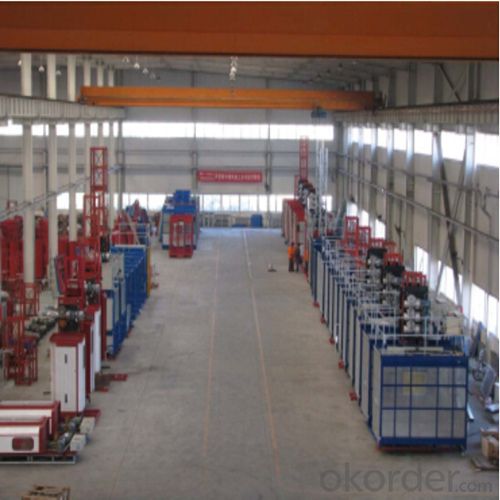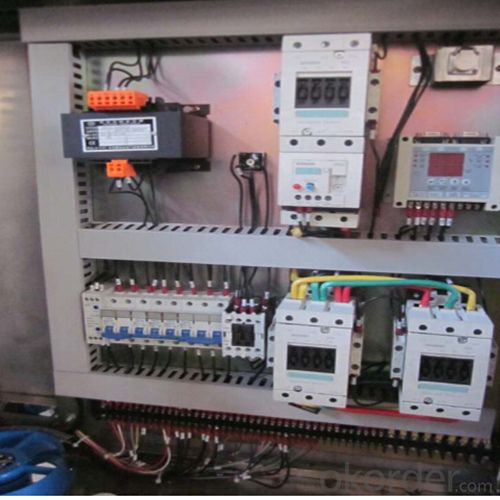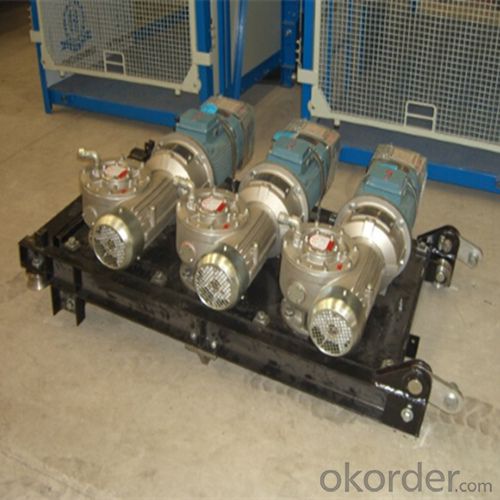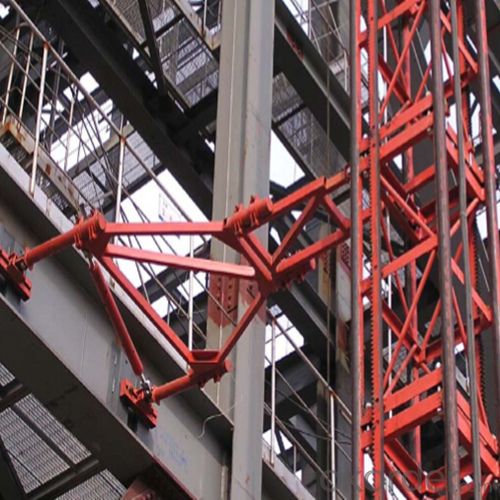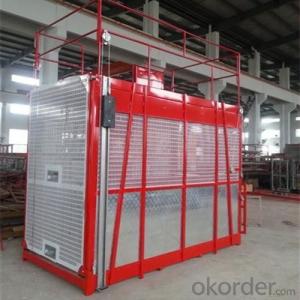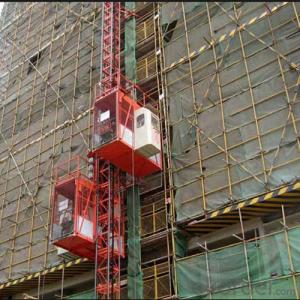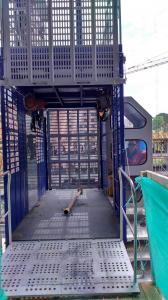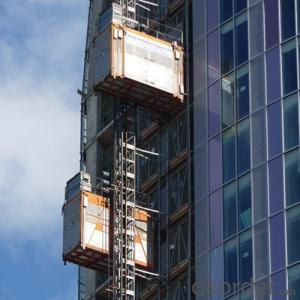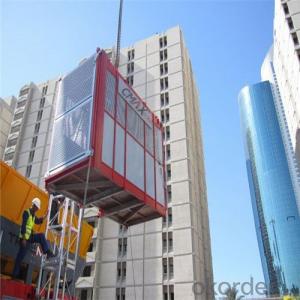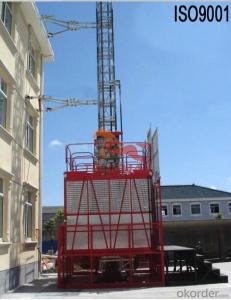Single Building Hoist New Lifting Machines
- Loading Port:
- China main port
- Payment Terms:
- TT or LC
- Min Order Qty:
- 1 unit
- Supply Capability:
- 30 unit/month
OKorder Service Pledge
OKorder Financial Service
You Might Also Like
Single Building Hoist New Lifting Machines
The hoist adopted with the normal electrical control method, is equipped with contactor, control transformer, anti-overheat protector, relay against the phase failure & disorder. All the electrical parts are equipped with Schneider and Siemens products.
The inverter, as a key controlling part, is used in the hoist adopted with VFD+PLC control method. This device is jointly developed by Japan Yaskawa and us. The hardware is supplied by Yaskawa, while the controlling software is supplied by us ensuring safe & reliable operations. PLC controller adopts OMROM products; brake unit is from YASKAWA and other electrical components are from Schneider or Siemens.
With application of VFD, it’s able to realize stepless speed regulating between zero and max speed. There are two shifting-gears set in the operating platform. One is maintenance shift, which can enable the cage run at speed of 0~5M/min for user to check the lubricating condition and connection of the machine’s parts. The other is working shift, enabling the cage with normal working speed. By adopting this control method, it’s also able to check and show the condition of power supply, operation and electrical failure. Moreover, it can avoid misoperation, giving great protection to transmission & electrical system.
Main Parts of Building Hoist
1. Adopts the most advanced VF speed control device and microcomputer programmable logic controller.
2. Stepless speed control helps eliminate the concussion during start up and braking, steady the operation process, and ensures automated leveling.
3. Adopts open loop V/Fcontrol; the speed control precision can reach ±2~3%. Realizes accurate low speed positioning of the hoist and avoid slipping during downward stopping of hoist.
4. The VF system has current-restriction function, ensuring a small current when motor start up and reducing the concussion to power supply. It reduces the engery consumption and mitigates effects to on site electric equipments.
5. The steadiness during running mitigates concussion to mechanical parts, reduces wears of rack, pinion and the brake and prolongs the spare parts'life.
6. The VF system also has the over voltage protection,low voltage protection, overcurrent, overload and anti-stalling protection functions,
7. The system applies the special software for hoists developed by our company, making the operation more safe and reliable.
Building Hoist images
CMAX Building Hoist
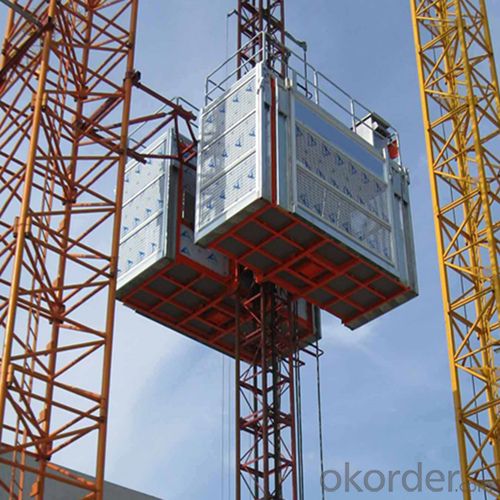
Anchorage System
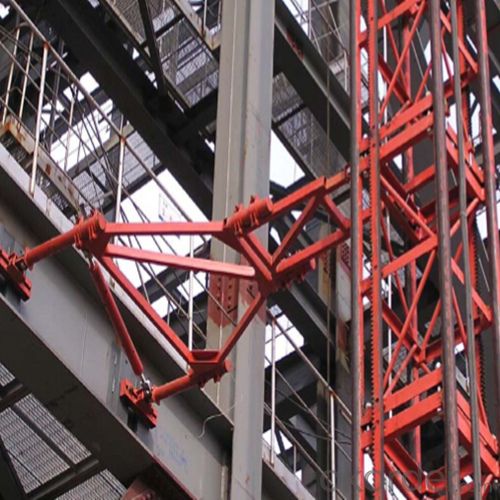
Driving Unit
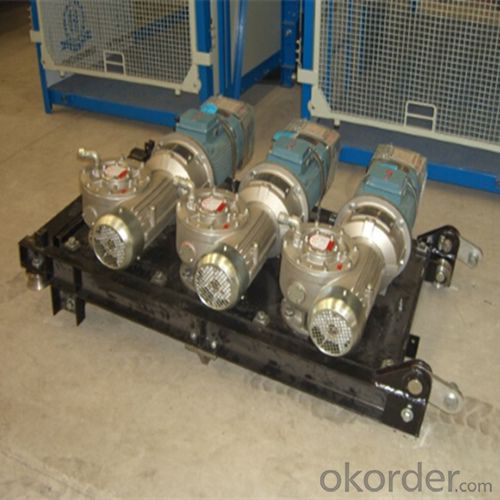
Warehouse
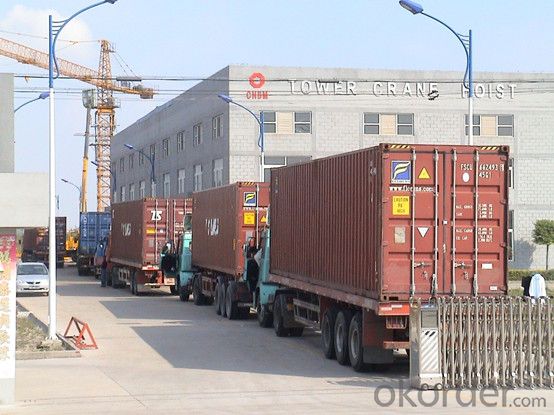
Building Hoist Specifiction
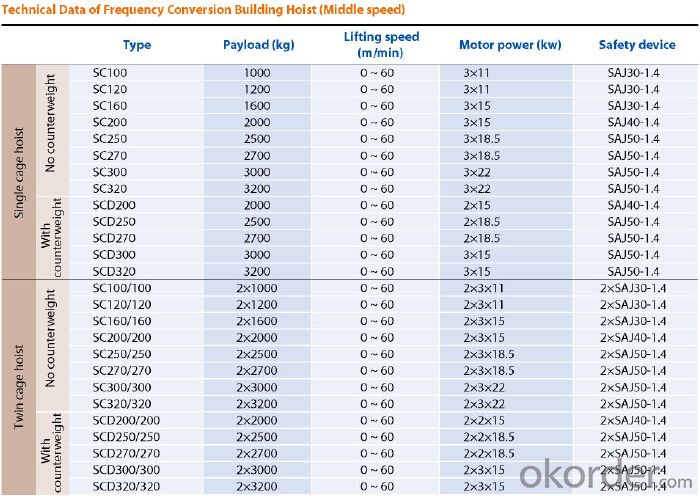
FAQ of Building Hoist
Q: What is the building hoist main purpose?
A: Building hoist equipped with double or single cabin to transport the materials and labors up and down. It's the ideal construction equipment for vertical transportation in the field of construction.
Q: What is the main structure of building hoist?
A: The P/M construction hoist mainly contains metal structure, driving system, electrical control system, cable guide & protection system, electrical top crane and safety device.
Q: What is the meaning of the building hoist’s code?
A: Take SC200/200 for example: “SC” stands for rack and pinion hoist, “200/200” stands for double cage and capacity is 2 tons per cage. “SC200” stands for single cage and capacity is 2 tons.
Q: What is the dimension of the cage?
A: Normally the cage dimension is 3X1.5X2.5M (L/W/H) for 2t type hoist. Details should be checked according to our quotation sheet. Also, the size can be customized according to the factual site condition. There are two doors (entrance & exit doors) for each cage, It can be produced as up & down sliding or ramping model for safety and convenience.
- Q: Is it possible to fix a building hoist or substitute it with alternative lifting machinery?
- <p>Yes, a building hoist can be repaired if the damage is not severe. If repair is not feasible or cost-effective, it can be replaced by other types of lifting equipment. There are various alternatives available, such as cranes, forklifts, and material hoists, each with its own advantages and suitable for different scenarios. The choice depends on factors like the weight of the load, the height of the building, and the specific requirements of the construction project. It's essential to consider safety, efficiency, and compatibility with the existing infrastructure when making such decisions.</p>
- Q: This question asks for a comparison between lifting equipment used in indoor settings versus those used outdoors, focusing on their differences.
- <p>Indoor lifting equipment is designed for controlled environments, often smaller and more precise, with features like electric chain hoists or jib cranes. They are typically quieter, require less maintenance, and are suitable for tasks like assembly, manufacturing, and warehouse operations. Outdoor lifting equipment, such as gantry cranes or mobile cranes, is built to withstand harsh weather conditions, has higher load capacities, and is often used for construction, shipping, and heavy industry. These are more robust, may require more maintenance, and are designed for larger, heavier loads over uneven terrain.</p>
- Q: This question asks for an explanation of the working mechanism of a building hoist, which is a device used in construction to lift materials and workers.
- <p>A building hoist, also known as a construction hoist or personnel/material hoist, is a temporary lifting device used in construction projects to transport workers and materials vertically within a building. It typically consists of a tower, a cage, a drive mechanism, and a control system. The tower is attached to the building's structure, and the cage is where people or materials are loaded. The drive mechanism, often powered by an electric motor, raises and lowers the cage along the tower. The control system manages the movement, ensuring safety features like speed control and emergency stops are in place. The hoist operates within a guide rail system, which keeps it aligned as it moves up and down the building's height.</p>
- Q: What are the benefits and drawbacks of utilizing a building hoist in construction?
- <p>Advantages of using a building hoist include increased efficiency in material transportation, reduced manual labor, and improved safety by minimizing the risk of accidents associated with manual handling. They can also speed up construction timelines by allowing for continuous material flow. Disadvantages include the initial cost of the hoist, the need for regular maintenance, and potential downtime in case of mechanical failure. Additionally, building hoists may have limited capacity and may not be suitable for all types of construction projects, especially those with irregular shapes or limited space for installation.</p>
- Q: This question asks for criteria or factors to consider when selecting the appropriate type of building hoist for a specific construction project.
- <p>Choosing a suitable type of building hoist involves considering several factors: the weight and size of materials to be lifted, the frequency of hoisting, the height of the building, and safety requirements. Assess the load capacity needed, as hoists vary in their lifting capabilities. Consider the hoist's speed and efficiency to ensure it meets the project's timeline. The hoist's size and maneuverability are crucial for fitting within the construction space. Safety features and certifications should be verified to ensure compliance with industry standards. Consulting with hoist manufacturers or rental companies can provide insights into the most suitable hoist for your specific application.</p>
- Q: Is it possible to use personal lifting equipment for lifting extremely heavy objects?
- <p>Using your own lifting equipment to lift very heavy objects can be possible, but it depends on the weight capacity and safety standards of your equipment. Always ensure that your lifting gear is rated for the weight you intend to lift and that it is in good working condition. Additionally, it's crucial to follow all safety protocols, including proper setup, securing the load, and using personal protective equipment. For extremely heavy objects, professional lifting services are often recommended to ensure safety and prevent accidents.</p>
- Q: This question asks if a building hoist is capable of lifting objects that vary in size and weight.
- <p>Yes, a building hoist can be used to lift objects of different sizes and weights, but it is crucial to ensure that the hoist's capacity is suitable for the load. Building hoists are designed to handle various materials and equipment during construction, and their lifting capacity can range from a few hundred pounds to several tons. It is essential to check the hoist's specifications and adhere to the maximum load limit to ensure safety and prevent damage to the hoist or the objects being lifted. Always follow the manufacturer's guidelines and safety standards when operating a building hoist.</p>
- Q: This question asks whether a building hoist can be utilized both indoors and outdoors and seeks an explanation for its suitability in both environments.
- <p>A building hoist can be used both indoors and outdoors, depending on the specific design and construction. Outdoor hoists are typically built to withstand weather conditions and are more robust, while indoor hoists are designed for controlled environments. The choice between indoor and outdoor use is determined by factors such as the building's structure, the materials being lifted, and the environmental conditions. Outdoor hoists may require additional features like weatherproofing and corrosion resistance, whereas indoor hoists focus on efficiency and ease of use within a protected setting.</p>
- Q: What is the purpose of a building hoist and can it be utilized for lifting heavy objects that cannot be manually lifted?
- <p>Yes, building hoists are specifically designed to lift heavy objects that are beyond the capacity of manual lifting. They are essential in construction sites for moving materials such as bricks, cement, and steel beams to various levels of a building. Building hoists are engineered to handle significant weight and ensure the safe and efficient transport of materials, reducing the risk of injury and improving productivity on construction sites.</p>
- Q: The elevator is banned from using elevators for more than a class of high winds
- More than 6 levels of wind are forbidden to be removed and used. More than 4 levels of wind are not allowed to rise, and more than 6 winds are prohibited.
Send your message to us
Single Building Hoist New Lifting Machines
- Loading Port:
- China main port
- Payment Terms:
- TT or LC
- Min Order Qty:
- 1 unit
- Supply Capability:
- 30 unit/month
OKorder Service Pledge
OKorder Financial Service
Similar products
Hot products
Hot Searches
Related keywords
